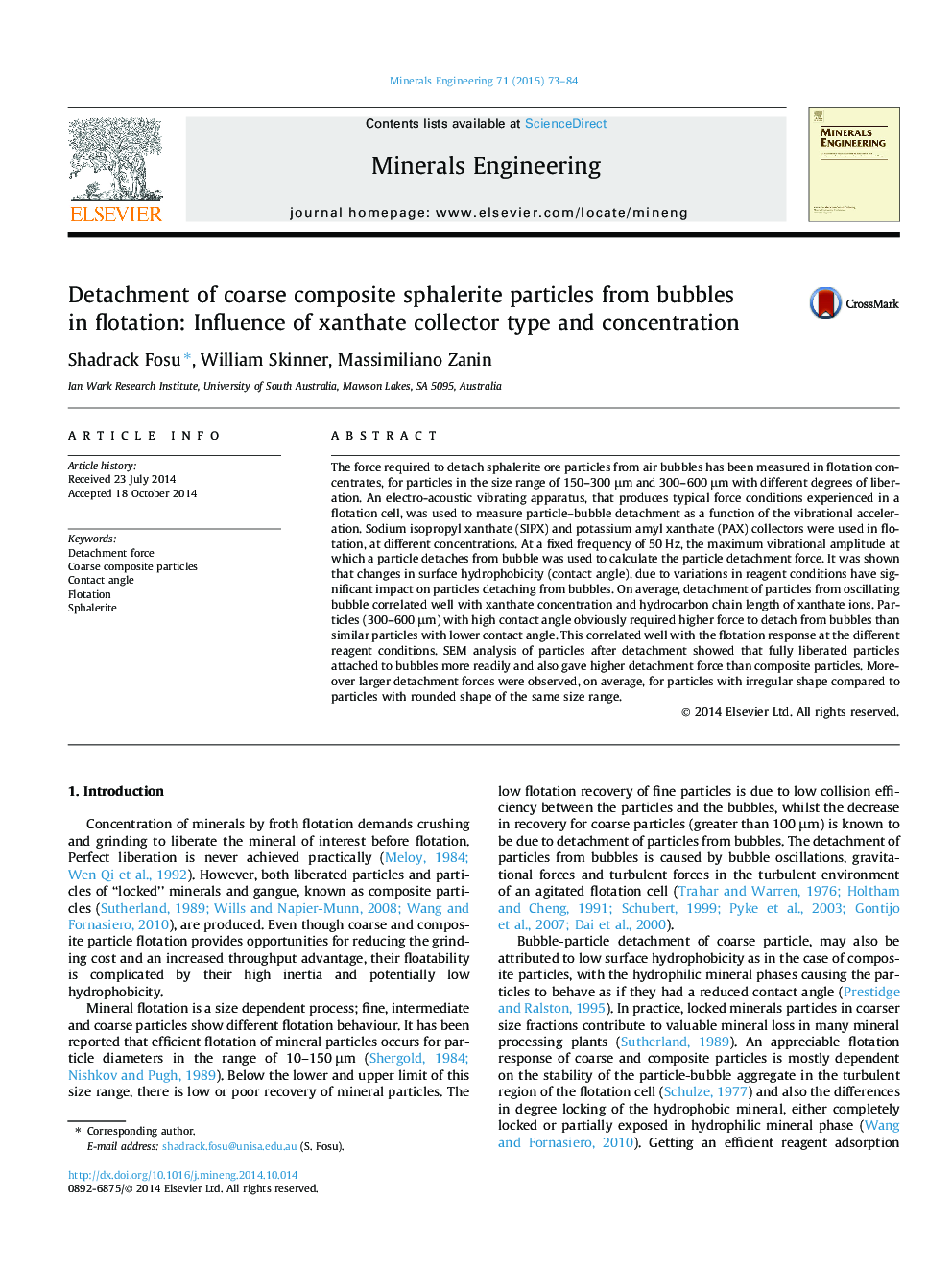| Article ID | Journal | Published Year | Pages | File Type |
|---|---|---|---|---|
| 6673028 | Minerals Engineering | 2015 | 12 Pages |
Abstract
The force required to detach sphalerite ore particles from air bubbles has been measured in flotation concentrates, for particles in the size range of 150-300 μm and 300-600 μm with different degrees of liberation. An electro-acoustic vibrating apparatus, that produces typical force conditions experienced in a flotation cell, was used to measure particle-bubble detachment as a function of the vibrational acceleration. Sodium isopropyl xanthate (SIPX) and potassium amyl xanthate (PAX) collectors were used in flotation, at different concentrations. At a fixed frequency of 50 Hz, the maximum vibrational amplitude at which a particle detaches from bubble was used to calculate the particle detachment force. It was shown that changes in surface hydrophobicity (contact angle), due to variations in reagent conditions have significant impact on particles detaching from bubbles. On average, detachment of particles from oscillating bubble correlated well with xanthate concentration and hydrocarbon chain length of xanthate ions. Particles (300-600 μm) with high contact angle obviously required higher force to detach from bubbles than similar particles with lower contact angle. This correlated well with the flotation response at the different reagent conditions. SEM analysis of particles after detachment showed that fully liberated particles attached to bubbles more readily and also gave higher detachment force than composite particles. Moreover larger detachment forces were observed, on average, for particles with irregular shape compared to particles with rounded shape of the same size range.
Related Topics
Physical Sciences and Engineering
Chemical Engineering
Chemical Engineering (General)
Authors
Shadrack Fosu, William Skinner, Massimiliano Zanin,
